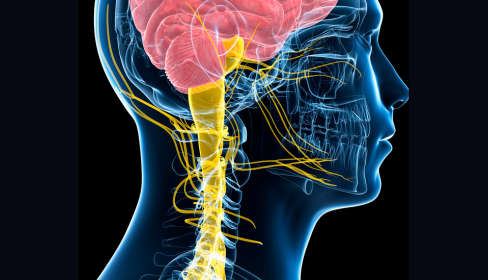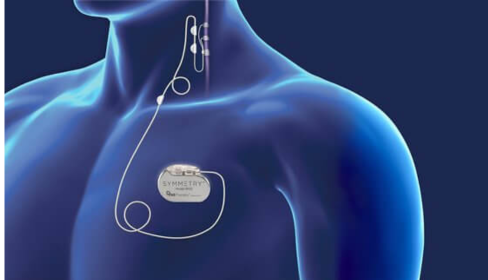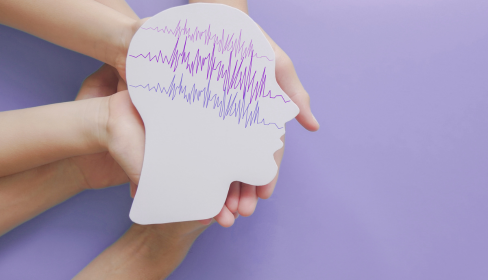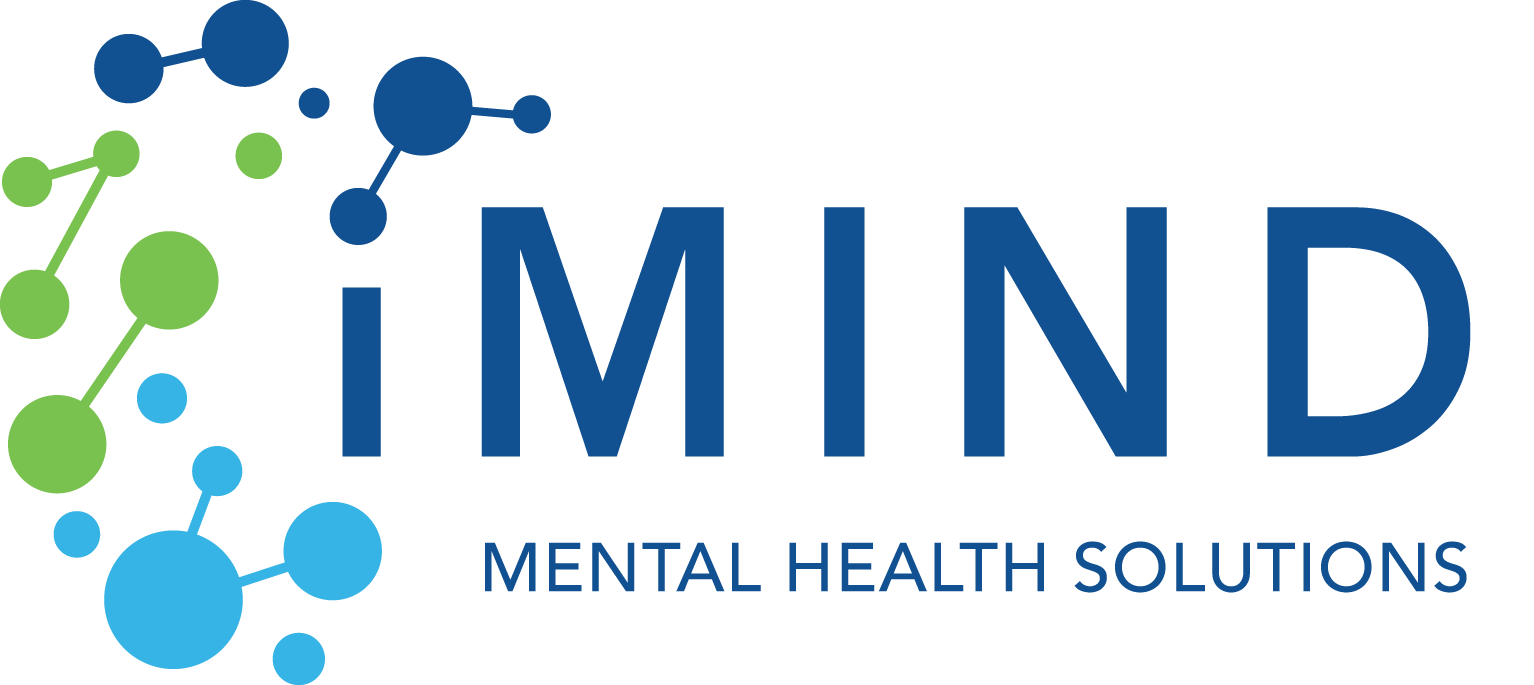Vagus Nerve Stimulation: How it Helps for Depression
iMind Mental Health Solutions Resource

Depression, a common yet debilitating mental health condition, casts a long shadow on individuals and society as a whole. The rate of depression in the United States has hit an all-time high, according the 2023 Gallup poll numbers. Nearly 30 percent of adults reported experiencing depression at some point in their lives, with nearly 18 percent (almost one in five) currently being treated for it at the time of the survey.
How Depression Affects Daily Life
Depression’s reach extends far beyond emotional lows, impacting various aspects of daily life.
- Physical health: It can bring about trouble sleeping, negative changes in appetite, fatigue, and decreased immunity
- Relationships: Social interactions become challenging due to low mood, withdrawal, and irritability.
- Work and academic performance: Difficulty concentrating, decreased motivation, and impaired problem-solving lead to reduced productivity.
- Overall well-being: Decreased engagement in activities once enjoyed, loss of interest, and feelings of hopelessness significantly impact quality of life.
Treatment-Resistant Depression
Unfortunately, not everyone responds effectively to standard treatments like medication and therapy. This subset, constituting an estimated 10 to 30 percent of individuals with depression, falls under the category of treatment-resistant depression (TRD).
Managing TRD is a serious challenge, but Vagus Nerve Stimulation (VNS) is a promising alternative therapy. Recent advancements in research and increasing clinical success offer hope for individuals seeking relief from the grip of depression that hasn’t responded to other treatments.
Vagus nerve stimulation is also indicated for treatment of bipolar depression.
What is Vagus Nerve Stimulation (VNS)?
VNS offers a distinct approach to treating depression, particularly for those facing limitations with traditional methods.

The Vagus Nerve
The vagus nerve, the longest cranial nerve in your body, acts as a communication pathway connecting your brain to various organs, affecting mood, heart rate, digestion, and more. It is a crucial component of the parasympathetic nervous system, which manages various bodily functions during rest and relaxation.

Stimulating the Nerve
VNS utilizes an implanted device, roughly the size of a silver dollar, positioned near your collarbone. A thin wire from this device connects to the portion of the vagus nerve that’s in your neck. This device delivers mild electrical pulses, sending signals to brain regions associated with mood regulation, and can potentially influence these functions.
- Neurotransmitter activity: Modulating levels of mood-regulating chemicals like serotonin and norepinephrine.
- Inflammation: Reducing inflammatory processes linked to depression.
- Brain plasticity: Promoting the brain’s ability to adapt and change, potentially strengthening neural connections.

Applications
While its potential in treating depression has been highlighted recently, vagus nerve stimulation also finds application in managing other conditions.
- Epilepsy: Reducing the frequency and severity of seizures.
- Obsessive-compulsive disorder (OCD): Alleviating symptoms like intrusive thoughts and repetitive behaviors.
- Chronic pain: Providing pain relief for various conditions
Important Note: While research on VNS is promising, understanding its precise mechanisms remains an ongoing scientific endeavor. Consulting healthcare professionals for detailed information and personalized assessment is crucial to determine if vagus nerve stimulation could be a suitable option for you.
Is VNS Right for You?
Deciding on vagus nerve stimulation therapy requires careful consideration. Discussing VNS with your doctor allows them to consider your unique medical history and recommend the treatment path best suited for your needs.
VNS is primarily considered for individuals with treatment-resistant depression. This means you have not achieved sufficient symptom relief despite trying multiple different medication regimens and psychotherapy for a specified period. It’s important to note that VNS is not a first-line treatment and should be explored in consultation with your doctor when other options haven’t yielded satisfactory results.
Individual Assessment
Beyond the diagnosis of TRD, your doctor will assess several important factors, including:
- Medical history: Examining any health conditions that might contraindicate VNS or require additional monitoring.
- Current medications: Ensuring compatibility with VNS and potential adjustments, if needed.
- Psychiatric evaluation: Evaluating your depression severity, potential risk factors, and overall suitability for VNS therapy.
- Personal expectations: Discussing your goals for treatment and understanding that VNS is not a quick fix but a long-term therapy requiring patience and commitment.
Weighing the Potential Benefits and Risks of VNS
Vagus nerve stimulation offers a glimmer of hope for individuals with treatment- resistant depression, but it’s crucial to weigh the potential benefits and risks before making a decision.
Potential Benefits
- Reduced depression symptoms: Research suggests VNS can alleviate symptoms like low mood, anhedonia, and fatigue, improving overall quality of life for some individuals with TRD.
- Long-term effects: Unlike medication, VNS’s effects may accumulate over time, potentially offering sustained improvement after a period of regular use.
- Fewer side effects: Compared to some common depression medications, VNS usually has fewer and milder side effects, promoting better tolerability for some patients.
- Drug-free alternative: For those reluctant to take medication or experiencing persistent side effects, VNS provides a drug-free treatment approach.
Potential Risks & Side Effects
- Implant surgery: While minimally invasive, the implantation procedure carries inherent risks like infection or device malfunction.
- Initial adjustment period: The body may need time to adapt to VNS, potentially leading to temporary side effects like hoarseness, cough, or tingling sensations.
- Long-term monitoring: Regular follow-up care visits and device adjustments are necessary throughout treatment.
- Not a cure: VNS does not offer a guaranteed cure for depression and may not work for everyone. Main goal is reduction of symptoms
- Cost considerations: The cost of the device, surgery, and ongoing care can be significant and may not be covered by all insurance plans.
Embarking on Your VNS Journey: What to Expect
If you and your doctor decide vagus nerve stimulation is a suitable option, here’s what to expect throughout the process.
Conventional psychiatry treatments are often based on established protocols and guidelines for specific disorders. These treatments are generally similar for all patients with the same diagnosis. Conventional psychiatry also incorporates psychotherapy, such as cognitive-behavioral therapy, but usually without integrating alternative therapies.

The Implant Procedure
- The procedure typically takes one to two hours under general anesthesia.
- The device is placed beneath your collarbone, with a thin wire connected to the vagus nerve in your neck.
- You’ll likely stay in the hospital for observation overnight.

Activation and Adjustments
- After a few weeks of healing, your doctor will activate the device and customize its settings.
- Regular follow-up care visits are vital to monitor your response and adjust the stimulation parameters as needed.

A Gradual Process
- Unlike medication, VNS’s effects often unfold gradually. Patience and commitment are key during this initial period.
- While some experience improvement within months, it can take up to a year for the full benefits to emerge.

Lifestyle Integration
- VNS therapy works alongside other treatment elements like medication, therapy, and healthy lifestyle choices.
- Maintaining a supportive network and making self-care activities a priority are crucial for overall well-being.
A Glimmer of Hope: Navigating VNS Toward a Brighter Future
While depression can cast a long shadow, vagus nerve stimulation offers a beacon of hope for those who have not found lasting relief through traditional approaches. Remember, you are not alone in this journey. By having an open and honest conversation with your doctor, you can explore whether VNS could be a potential key to unlocking a brighter future.
This path may require patience and commitment, but with the right support and a proactive approach, VNS could guide you towards a renewed sense of well-being and a life less burdened by depression. Remember, even the smallest sparks can ignite significant change. Take the first step today, reach out to your doctor, and explore the possibilities that vagus nerve stimulation may hold for you.
- Al-harbi, K. S. (2012). Treatment-resistant depression: therapeutic trends, challenges, and future directions. Patient Preference and Adherence, 6(6), 369.
- Witters, D. (2023, May 17). U.S. Depression Rates Reach New Highs. Gallup.com.
Latest News
-
Top 10 Questions About Art Therapy for Mental Health
Art therapy has recently gained recognition for its unique blend of healing therapy and personal expression. Despite its growing popularity, there seems to be some misunderstanding about what art therapy entails, who it can benefit, and how it differs from other forms of therapy.
-
ADHD Strengths: The Positive Side of Attention Deficit Hyperactivity Disorder
Scattered minds, fidgety bodies, and difficulty focusing. Attention Deficit Hyperactivity Disorder (ADHD) often gets painted in shades of struggle. But what if there’s a brighter side to the story? What if, beneath the challenges of ADHD, lie unique strengths just waiting to be unlocked?



